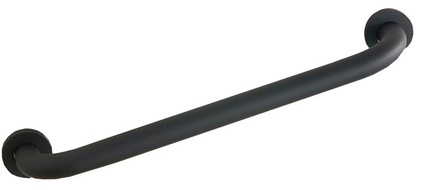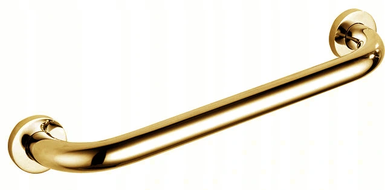
Wall rails are most commonly found in public utility buildings. They assist elderly people and those with various types of mobility disabilities. Is this the only place they can be installed? Of course not! Their application is much broader, and currently, there are variants available on the market ready for installation in a home or apartment. Find out which wall rails you can use in your space. Discover the currently popular variants!
Wall rails — what do you need to know about them?
Many people have difficulty moving. This can be due to their age, degree of illness, or as a result of an accident or surgery. This is why wall rails have emerged, which also provide safety for ordinary household members. And it's worth knowing that a room like a bathroom can be a particularly challenging space where a health-threatening incident can easily occur, especially for people who are not fully mobile. For this reason, when designing or renovating the shower area, products of this kind should be considered. Otherwise, bathroom design can become much more expensive and challenging.
What is it like to use a wall rail?
People with disabilities, i.e., those moving with crutches, canes, in wheelchairs, or with other limitations, have a huge problem using the bathroom and toilet independently. Regardless of the existing reason, it's they who need something to hold onto in these rooms. Fortunately, practical and comfortable wall rails are designed to help anyone with mobility difficulties.
However, for those using a wheelchair, they serve not only as an element to hold onto. They are a kind of assistance to independently sit on the toilet or take a bath. Therefore, these products must always be attached in a very stable and durable way. After all, the weight of the person using the bathroom is transferred to their surface.
What are the rules for mounting wall rails?
As in every case, there are many possible ways to attach rails to the wall. This means that depending on what the company offers, installation can be done in various ways, namely:
- using appropriate mounting screws (special openings are designed in the construction) which require using special tools (such as a drill or screwdriver),
- using specialized, extremely strong adhesives,
- directly mounting them to the wall surface,
- attaching them to the floor.
It's worth knowing, however, that when mounting wall rails, they need to be appropriately distributed in the room. Therefore, in the case of a toilet bowl, rails must be placed on both sides. Experts have calculated that the distance between one edge of the toilet seat and the rail's edge should be about 32-40 cm. The same applies to sinks, but in this case, it's important to remember that both the tap and attached handles should be at the same height.
On the other hand, when the shower area requires wall rails, they should be mounted together with a special seat. In this case, handles are needed on the wall perpendicular to where the seat is attached. The recommended height for mounting rails is 90-100 cm from the floor.
Wall rails — available types
The market is currently rich in bathroom products. Therefore, it's no surprise that modern wall rails are also available in various versions. For this reason, one can easily purchase models made from stainless steel. Such a product is distinguished by considerable resistance to mechanical injuries and scratches and by an extremely aesthetically polished surface. Furthermore, wall rails are made from high-quality plastics. Alternatively, models finished with wood or other decorative elements can be found.
Of course, aesthetic values play a significant role during the decoration of a bathroom or toilet. Meanwhile, the most important detail of a good wall rail is its cross-section. Hence, round and oval variants are very popular. Their shape is pleasant to touch, while also ensuring a proper grip. Remember, rails attached to the wall, whether made of stainless steel or plastic, must not have sharp edges or parts!





















